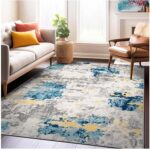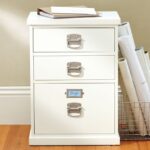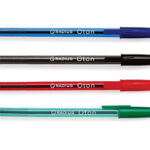In today’s fast-paced and competitive business environment, having the right office furniture is more than just an aesthetic choice—it is a critical component that affects employee productivity, workplace wellness, and the overall efficiency of daily operations. Whether you’re furnishing a small home office or a large corporate space, the furniture you choose plays a vital role in defining the functionality and comfort of your working environment. Office furniture is not just about desks and chairs; it includes ergonomic solutions, storage units, collaborative workspaces, and even breakroom seating that collectively contribute to a productive atmosphere.
Modern businesses are increasingly recognizing the need for functional yet stylish furniture that reflects their corporate culture while also accommodating employee needs. The choice of office furniture impacts posture, energy levels, and even employee morale. Poorly designed setups can lead to fatigue, back pain, and reduced concentration, while ergonomic designs promote comfort and efficiency. Investing in quality furniture isn’t just a luxury—it’s a strategic decision that benefits both employers and employees.
Types of Office Furniture Every Workspace Needs
Office spaces require a variety of furniture pieces tailored to specific functions. The most common include desks, chairs, filing cabinets, conference tables, bookshelves, and reception area seating. Desks can range from simple writing desks to adjustable standing desks that promote movement and reduce the health risks associated with prolonged sitting. Executive desks often come with extra space and storage, designed for high-level management personnel who require more room to operate.
Chairs are perhaps the most important piece in terms of health and productivity. Ergonomic chairs that provide lumbar support, adjustable height, and armrests are essential to minimize discomfort and long-term injuries. Conference tables and collaborative workstations are critical for teamwork, while filing cabinets and storage solutions help keep the workspace organized and clutter-free. Each piece of furniture serves a purpose, and thoughtful coordination between them creates a cohesive and efficient office environment.
How Office Furniture Impacts Employee Productivity
The link between office furniture and employee productivity has been studied extensively, and the findings are clear: the right furniture can significantly boost performance. Ergonomic chairs and desks allow employees to maintain better posture, reducing fatigue and increasing focus. Comfortable breakout areas with soft seating encourage collaboration and idea-sharing, while private work pods or cubicles help those who need quiet environments to concentrate.
Beyond physical comfort, office furniture contributes to mental well-being. A well-organized space reduces stress and creates a sense of control. When employees feel valued through thoughtful investments in their comfort and work environment, morale improves, leading to higher engagement and job satisfaction. Businesses that invest in high-quality furniture not only enhance productivity but also experience lower absenteeism and turnover rates.
Trends in Modern Office Furniture Design
Office furniture design has evolved dramatically in recent years, driven by changing workplace dynamics and the rise of hybrid and remote work. Open-plan layouts are being replaced or modified with flexible and modular furniture that allows for quick reconfiguration. Sit-stand desks are growing in popularity as more employees seek movement-friendly workstations. Sustainability is also a major trend, with eco-friendly furniture made from recycled or renewable materials becoming more widely available.
"Give thanks to the Lord for He is good: His love endures forever."
In terms of aesthetics, minimalism reigns supreme. Sleek lines, neutral color palettes, and multifunctional furniture that blends seamlessly into various design schemes are highly sought after. Additionally, tech-integrated furniture is on the rise, including desks with built-in charging ports and chairs with smart posture sensors. These innovations reflect a shift toward smarter, healthier, and more adaptive work environments.
Buying Tips for Office Furniture That Suits Your Needs
Choosing the right office furniture involves more than just browsing catalogs or visiting showrooms. It’s important to assess your business needs, employee preferences, and the available space before making a purchase. Start by setting a budget and creating a floor plan to identify which pieces are essential. Prioritize ergonomics, especially for desks and chairs, as these directly impact employee health.
It’s also wise to think long-term. Invest in furniture that is durable and easy to maintain. Modular or adjustable furniture allows for scalability as your business grows. Don’t forget aesthetics—your office is an extension of your brand, and cohesive, stylish furniture helps create a professional image. Always look for warranty and after-sales service, especially for large orders.
Creating a Comfortable and Inspiring Work Environment
A comfortable work environment does more than improve posture—it cultivates a culture of wellness and motivation. Office furniture should support diverse working styles, from focused tasks to team meetings. Soft seating areas for informal discussions, high-back chairs for quiet corners, and adjustable lighting around desks all contribute to an ideal workspace.
Color psychology also plays a role in how furniture influences mood. Warm tones can create a cozy atmosphere, while cool hues may promote calm and focus. Greenery, soft textures, and acoustic panels can further enhance comfort. When you combine functional design with emotional well-being, the office becomes a place where employees are excited to work, collaborate, and innovate.
Customization and Flexibility in Office Furniture Solutions
No two businesses are alike, which is why customization is becoming a key factor in office furniture selection. Many suppliers now offer bespoke solutions tailored to a company’s specific workflow, branding, and office layout. From choosing upholstery colors to adjusting desk dimensions, customizable options allow businesses to create a unique identity and maximize space utilization.
Flexibility is especially important in modern hybrid work models. Furniture that can be easily reconfigured supports both in-office collaboration and remote work rotations. Mobile desks, stackable chairs, and foldable tables allow for fast transitions and multi-purpose use. By investing in adaptable office furniture, companies ensure their workplace remains efficient and relevant in the face of changing demands.
Conclusion
Incorporating the right office furniture is not just a matter of style—it’s a foundational element of workplace success. From boosting productivity to supporting employee well-being and creating a professional image, the benefits are far-reaching. Every business, whether small or large, can gain from investing in thoughtfully designed, ergonomic, and future-ready furniture. With an ever-expanding range of options on the market, it’s easier than ever to find solutions that meet both functional and aesthetic needs. To explore a diverse selection of high-quality, customizable furniture options, consider partnering with office furniture, a trusted name in workspace solutions.







